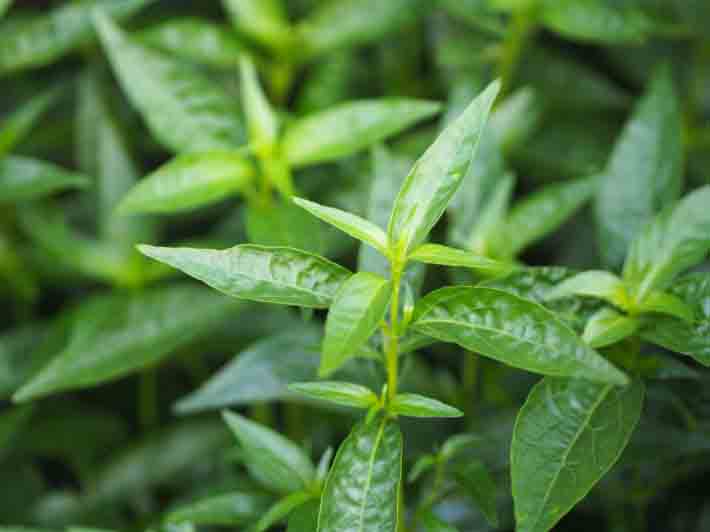Andrographis Profile
Written by Joy
Nov 05 2020

Andrographis paniculata is an annual herb, 4~8 cm long, and 1~2.5 cm wide. It is a kind of medicinal plant, which has the effects of clearing away heat, detoxifying, reducing inflammation, reducing swelling, and relieving pain.
Andrographis morphological characteristicsAndrographis efficacy and roleAntipyretic effectAnti-inflammatory effects of Andrographis paniculataThe influence of Andrographis paniculata on immune functionAndrographis cultivationSite preparationThe breeding method of Andrographis paniculataField management of Andrographis paniculataThe pest control of Andrographis paniculata
Andrographis morphological characteristics
Andrographis is an annual herb. Its stem is 50-80 cm high, 4-sided, and the lower part is branched with enlarged nodes. The leaves are ovate-oblong to oblong-lanceolate, 4 to 8 cm long, 1 to 2.5 cm wide, and slightly obtuse at the tip. The upper leaf of the inflorescence axis is small, the raceme is terminal and axillary, integrating large panicles; bracts and bracteoles are tiny, about 1 mm long; calyx lobes are triangular-lanceolate, about 3 mm long, with glandular hairs and The corolla is white and small. The lower lip has a purple band pattern, about 12 mm long, with glandular hairs and pubescent hairs on the outside. It has 2 lip shapes, the upper lip is slightly 2-lobed, and the lower lip is 3-lobed. The corolla tube and lip of Andrographis paniculata The petals are the same lengths. Andrographis paniculata has two stamens, two-loculed anthers, and pilose at the base and one side of the filament. The capsule is flat, with a groove in the middle, about 10 mm long, with sparse glandular hairs; its seeds are 12, square, and wrinkled.It is commonly cultivated in Fujian, Guangdong, Hainan, Guangxi, and Yunnan in China, and introduced in Jiangsu and Shaanxi; the place of origin may be in South Asia. Australia is also cultivated.
Andrographis efficacy and role
Antipyretic effect

Anti-inflammatory effects of Andrographis paniculata
Increased permeability of capillaries in the skin or abdominal cavity of mice caused by xylene and acetic acid. Gavage of deoxyandrographolide or dehydroandrographolide can reduce the exudation of capillary walls. Compared with the control, P<0.05 or P< 0.01. Deoxyandrographolide has a significant inhibitory effect on hemorrhagic and necrotic exudation caused by croton oil in rats. Deoxyandrographolide, andrographolide, and neoandrographolide at a high dose of 100mg/capsule for 7.5 hours have a significant inhibitory effect on the migration of white blood cells in the rat CMC capsule. The experiment also observed that these four kinds of andrographolide have varying degrees of excitatory effect on the adrenal cortex function of mice, with dehydrated andrographolide being the strongest. Andrographolide and neoandrographolide can inhibit Escherichia coli.The influence of Andrographis paniculata on immune function

Andrographis cultivation
Site preparation
Andrographis likes a hot and humid climate. Like sunshine and fat. The optimum temperature for seed germination and seedling growth period is 25~30℃. When the temperature drops to 15~20℃, the growth will be slow; when the temperature drops to about 8℃, the growth will stagnate; when the temperature drops to about 0℃ or frost, the plants will all wither. Fertile, loose, well-drained acidic and neutral sandy loam soil is suitable for cultivation, and alkaline soil with pH 8.0 can still grow normally.The breeding method of Andrographis paniculata

Field management of Andrographis paniculata
It is mainly watered in time to help the seedlings to take new roots. After that, weeding and topdressing will be done every 15~20d. The topdressing is mainly nitrogen fertilizer, which can flow human and livestock manure, urea, etc., especially in 6, 7, 8 The monthly field management is very important, it is necessary to apply more nitrogen fertilizer and water frequently. When the plant height is 30~40cm, soil can be cultivated to prevent wind damage.The pest control of Andrographis paniculata
The disease of Andrographis paniculata is blight, which occurs in 1~2 pairs of true leaf stage, which can reduce soil moisture. Treat the soil with 50% carbendazim, or irrigate the diseased area with 1000 times liquid. Damping-off occurs when there are 2~3 pairs of true leaves. Temperature can be controlled, ventilation should be paid attention to, and seedbed management should be strengthened. Black stem disease occurs in the adult plant stage, and field management can be strengthened to remove stagnant water in time and avoid continuous cropping. During the onset of Andrographis paniculata, spray or water the diseased area with 50% carbendazim 1000 times solution. There are also epidemics, spray, or shallow irrigation with 50% carbendazim 1000 times solution during disease. There are also diseases such as epidemics and viral diseases. Insect pests include cotton bollworm and mole cricket.Latest Updated
- Benefits of Bugleweed - 7 Science-backed Health Benefits
- Bugleweed Dangers & Side Effects - Is It Poisonous?
- How to Plant Evergreen Trees - What You Should Know
- When to Plant Evergreens - Grow Guide for Evergreen Trees
- 12 Wonderful Evergreen Shrubs for Your Garden
- 12 Popular Evergreen Plants with Pictures for Beginners
- When And How To Prune A Lilac Bush Like a Pro
- How to Grow & Care for Lilac Vine (Hardenbergia Violacea)
- Japanese Lilac Tree (Syringa Reticulata) Care & Propagation Guide
- Shumard Oak Pros and Cons - What to Know
Popular Articles
- Winter maintenance of Antirrhinum Majus
- How to Grow Terminalia Mantaly Tree
- How to Grow and Care for Crossostephium Chinense
- How to grow Antirrhinum Majus in spring
- Peristeria Elata (Dove Orchid) Profile: Info & Care Guide
- Underwatered Snake Plant (Sansevieria Trifasciata) - Signs And How To Fix
- How to Care for Brazilian Jasmine Plant (Mandevilla Sanderi)
- How to Grow & Care for Graptopetalum Purple Delight in Summer
- Rosa Chinensis (China Rose): Plant Growing & Care Tips
- How to Care for Baby Sun Rose (Aptenia Cordifolia)